I have two polygons which overlaps and I use transformers to have the intersection (I tried Clipper, AreaOnareaoverlayer, spatialrelator and intersection) . So, it created a new polygon (the overlap of the two polygon.) The problem is that this new polygon belongs (in the attribute table) to one of the two polygon (The feature name of the new polygon is the name of one of the polygon) but I would like the name of the both polygon even if it created two overlap (the same but one with the name of the first polygon and one witch the second).
Thanks you
Best answer by geomancer
View original




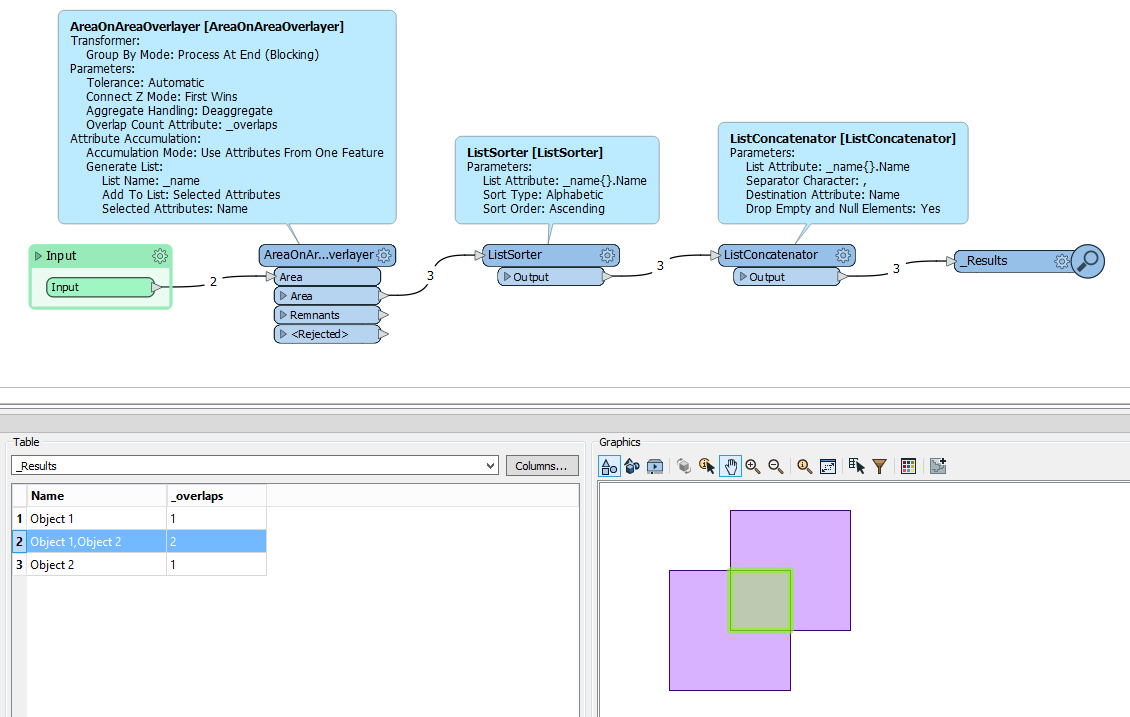
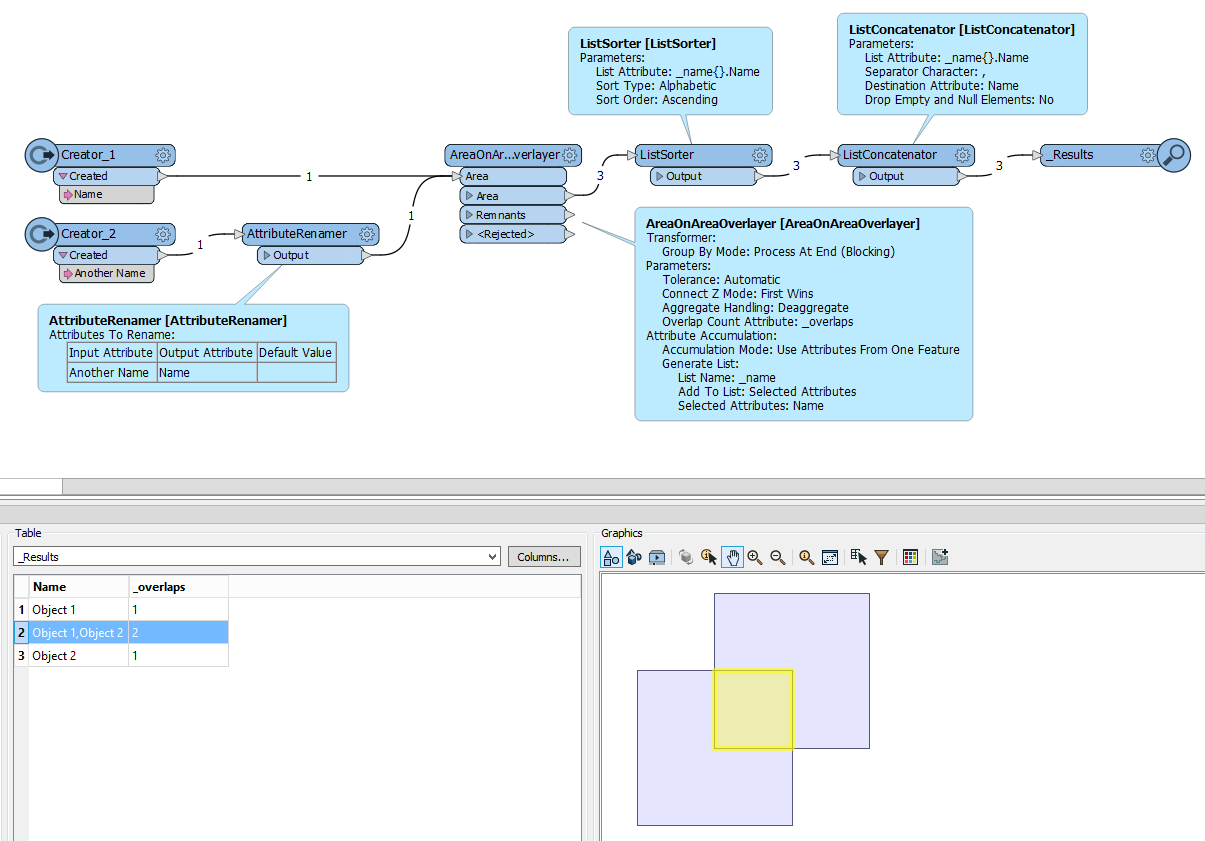
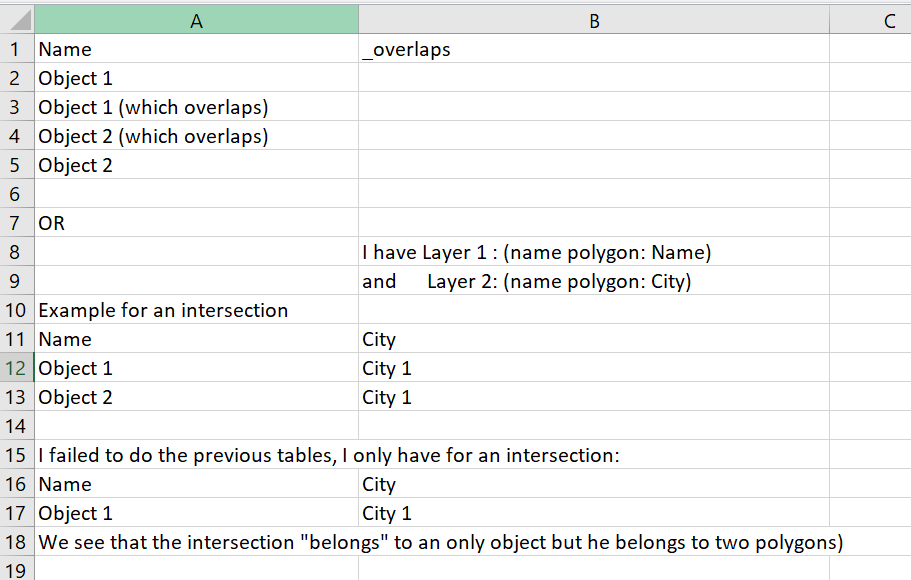
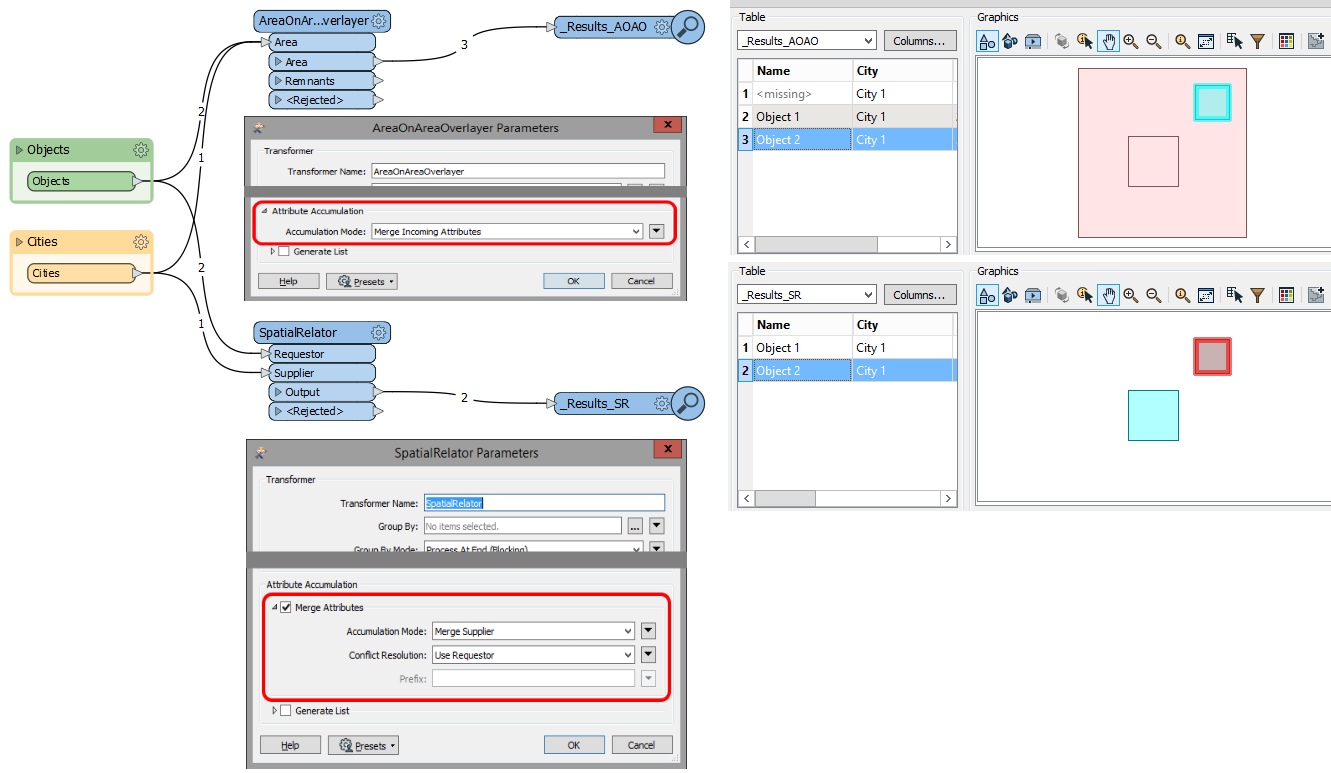
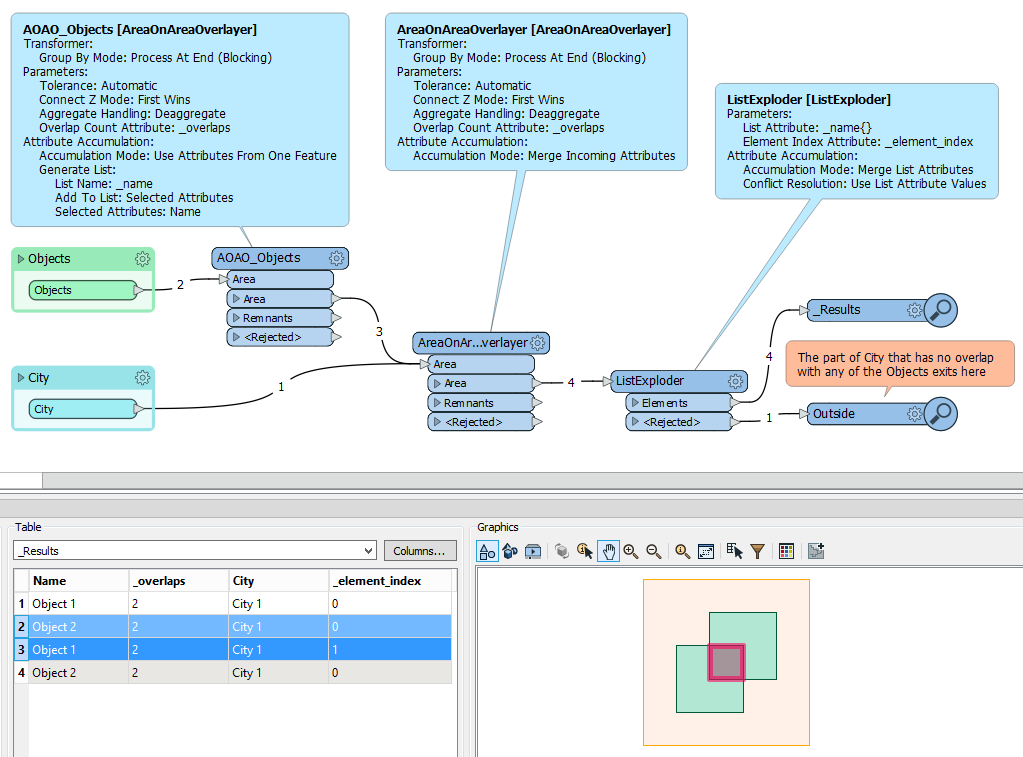 If not, can you provide some sample data (or mock-up data) of cities and objects (areas)?
If not, can you provide some sample data (or mock-up data) of cities and objects (areas)?